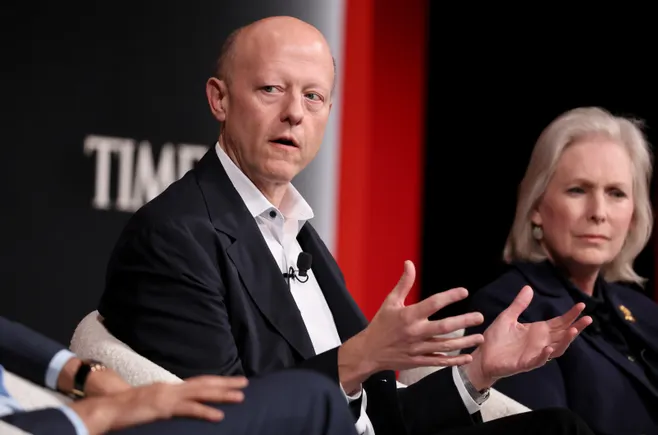Circle Internet Group has its sights set on “a big tent mentality” for its stablecoin and payments infrastructure, integrating it within a larger, rapidly expanding digital currency market, CEO Jeremy Allaire said Tuesday.
Circle reported its first public financial results on Tuesday, two months after its initial public offering raised $1.2 billion.
The Trump administration has offered a welcoming embrace of cryptocurrency and stablecoins with President Donald Trump recently signing the Genius Act, which provides a regulatory framework for U.S. stablecoin use.
“We expect many different payment networks and many different capital markets exchanges and others to build on our stablecoin market infrastructure,” Allaire, who is also a Circle co-founder, said on a Tuesday conference call with analysts.
Such building expands the use of Circle’s stablecoin, USDC, and leads companies to adopt Circle technology, services and protocols, he said. “And so broadly, we’ve got a big tent mentality here, and we want to see a lot of success across many different types of companies now.”
Unlike some cryptocurrencies, such as bitcoin, stablecoins are typically tied to the value of a fiat currency, like the dollar, to reduce their price volatility. Their use has grown rapidly in recent years, especially in emerging markets, for cross-border transactions and as a digital repository for dollars.
In recent months, Circle has announced new partnerships with payments giants Fiserv and Fidelity National Information Services. Fiserv said in June it will incorporate Circle’s technology for its planned digital assets platform and stablecoin, dubbed FIUSD. On July 28, FIS and Circle said they’ll partner to allow financial institutions an option to let consumers make stablecoin payments with Circle’s currency.
“Our market-neutral model invites broad adoption of our platform from even the most competitive players,” Allaire told Wall Street analysts.
The CEO also pointed out Shopify’s decision in June to accept Circle’s stablecoin as a payment option, working with cryptocurrency exchange Coinbase Global and Stripe, the payment-processing software company.
“That’s exactly what we want to see from our partners like Coinbase and others,” Allaire said. “We want to see people building and integrating USDC into commerce flows and into other types of applications.”
Such arrangements grow “network value for Circle and it expands the utility” of USDC. “And that’s part of our competitive moat–is this expanding utility through developers that integrate this and deploy this in different ways,” he said.
Circle said USDC in circulation grew to $65.2 billion as of Sunday, or 96% above the second quarter of 2024, according to the company’s earnings release.
The company’s cross-border payments network, Circle Payments Network, began operating in May with four “active payment corridors” in Brazil, Hong Kong, Mexico and Nigeria, Allaire said. More than 100 financial institutions have expressed interest in using the network later this year, Circle said in the release.
Also Tuesday, Circle announced the launch of Arc, the company’s new blockchain network designed for major financial firms and large enterprise companies. Circle executives said the blockchain will give large companies low costs, stable fees and a faster performance level.
“We are at the fulcrum of a massive mainstream embrace of stablecoins in the financial system, and firms are racing to build on this infrastructure, but until now, the blockchain infrastructure needed to meet the most intense demands of major financial firms and enterprises has simply not existed,” Allaire said.
Circle reported a $482 million net loss, with most of that represented by stock-based compensation expenses arising from the IPO. Revenue was $658 million, a 53% increase from the same period last year. Reserve income – the interest Circle earns from its stablecoins reserve assets – was $634 million.
Circle’s “long-term thesis of fast growth remains,” Baird analysts wrote Tuesday in a client note, noting that the company remains heavily reliant on interest income for about 95% of its revenue.
